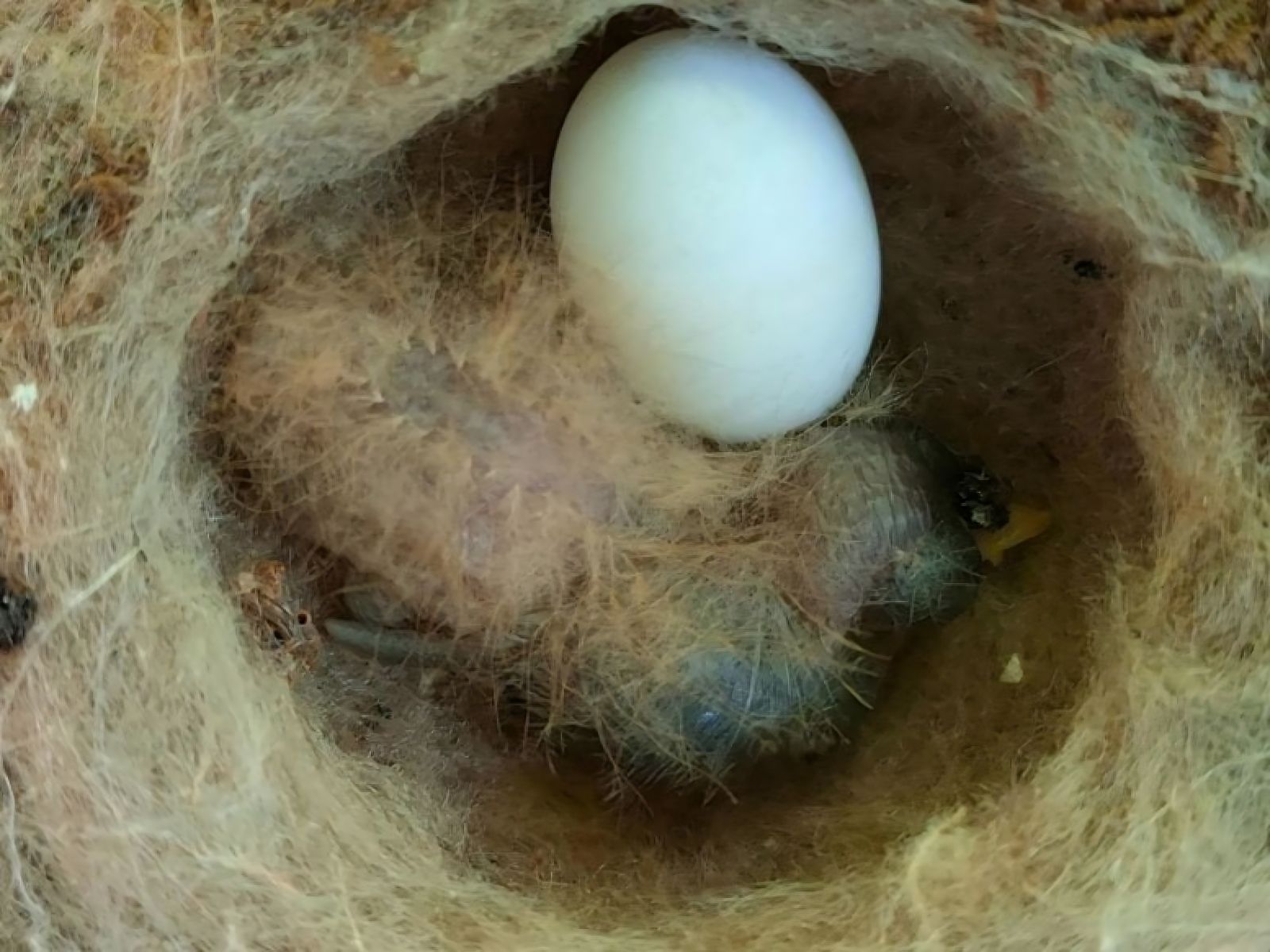Follow us on Google News (click on ☆)

A white-necked hummingbird chick in its nest, mimicking a venomous caterpillar.
Credit: Michael Castaño-Díaz
During an expedition in the rainforest of Panama, biologists observed unprecedented behavior in a white-necked hummingbird chick. Covered in brown down, it jerked its head in a way typical of the region's venomous caterpillars. This discovery suggests a rare form of mimicry between a bird and an insect.
The researchers documented this observation in the journal Ecology, marking the first evidence of such mimicry in hummingbirds. The team, led by Jay Falk, was surprised by the similarity between the chick's movements and those of local caterpillars, known for their toxicity.
Batesian mimicry, where a harmless species mimics a dangerous one, is well-documented in insects and snakes. However, this case between a vertebrate and an invertebrate is exceptional. Scientists are now considering experiments to confirm this hypothesis.
The chick shakes its head like a caterpillar when researchers approach.
Credit: Jay Falk/CU Boulder and The Smithsonian Tropical Research Institute
Credit: Jay Falk/CU Boulder and The Smithsonian Tropical Research Institute
This discovery opens new perspectives on bird survival strategies in tropical forests. Researchers encourage citizen observations to gather more data on this phenomenon. Nature continues to reveal unexpected interactions between species.
The study highlights the importance of careful observation in understanding biodiversity. Tropical forests, rich in species, still hold many mysteries. This case of mimicry may only be the tip of the iceberg.
Next steps include experiments with decoys to test the effectiveness of this strategy. Researchers hope to better understand how chicks escape predators in such a hostile environment.
What is Batesian mimicry?
Batesian mimicry is an evolutionary strategy where a harmless species mimics the appearance or behavior of a dangerous one to protect itself from predators. This phenomenon was first described by naturalist Henry Walter Bates in the 19th century.
In the case of the white-necked hummingbird, the chick mimics the movements and possibly the appearance of a venomous caterpillar. This imitation reduces the chances of being attacked by predators that associate these signals with danger.
This type of mimicry is common in insects, such as non-venomous butterflies that resemble toxic species. However, it is rarely observed between animal groups as different as birds and insects.
Studying such cases helps scientists understand how evolutionary pressures shape species' behaviors and appearances in diverse ecosystems.